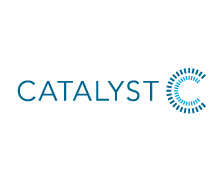by Catalyst
There are many ways to build support for diversity and inclusion initiatives at your workplace. Sometimes, anecdotes or looking at competitor’s diversity programs are the best way to help others understand the experiences of diverse employees. Often, the hard data and support provided by rigorous research conducted by Catalyst and other research organizations is required.
In particular, the business case benefits from a grounding in solid research. Catalyst has explored hundreds of studies and reports on the business case for gender diversity. Although each organization, as well as each individual, will have a unique set of issues that seem most compelling, looking at the overall research is a first step in strengthening a business case.
Improving Financial Performance
Companies with the most women board directors, especially those with three or more women board directors, had better financial performance than those with the least women board directors.
A 2011 Catalyst study found that companies with the most women board directors outperformed those with the least on return on sales by 16 percent and return on invested capital by 26 percent. In addition, companies with sustained high representation of women—three or more women board directors in at least four of five years—significantly outperformed those with no women board directors.
A gender-diverse board of directors impacts the future of women in a company’s senior leadership.
Catalyst found a clear and positive correlation between the percentage of women board directors in the past and the percentage of women corporate officers in the future.
Companies with more women in upper management ranks or on boards showed better financial performance.
Catalyst’s 2004 research in this area found that companies with the highest representation of women in senior leadership had better financial performance than companies with the lowest representation of women on return on equity and total return to shareholders.
Leveraging Talent
A better diversity climate is related to lower intent to leave.
Researchers found that decreased turnover intentions were associated with employees’ positive perceptions of an organization’s “diversity climate.” The study also found that all employees, including white men, may benefit from a positive diversity climate.
Employee satisfaction and engagement hinges partially on satisfaction with a company’s treatment of diverse people.
A human resources consulting firm analyzed extensive employee opinion survey responses and found a positive and significant relationship between employees’ satisfaction with how fairly their company treated diverse employees and consumers and their overall job satisfaction and engagement.
Reflecting the Marketplace and Building Reputation
Clients are asking firms to provide evidence of their diversity, policies, and initiatives.
Research conducted on 13 top “city law firms” in the UK found that all of them had faced demand-side diversity pressure. When bidding for potential private sector clients, the firms reported receiving requests for information about diversity, including their diversity policies and initiatives. This practice is becoming increasingly common, and client interest in diversity is moving past the “pitch” process and continuing once a firm is retained.
Gender-diverse boards increase corporate reputation.
A study found that Fortune 500 companies with a higher percentage of women on their board of directors were more likely to be on Ethisphere Institute’s list of the “World’s Most Ethical Companies.”
Increasing Innovation
An increase in women has been linked to a group’s effectiveness in solving difficult problems.
A study by researchers from MIT, Carnegie Mellon University, and Union College documented the existence of collective intelligence in groups whose members cooperated well, and found that collective intelligence surpassed the cognitive abilities of the individual members of the group. A major factor in creating a group with the right internal dynamics was the number of women. The most effective and cooperative groups exhibited high levels of “social sensitivity.” Because women tend to have higher levels of social sensitivity, the analysis revealed that the number of women in the group significantly predicted the effective problem-solving abilities of the group overall.
Better problem-solving and increased creativity are positively associated with a variety of diversity attributes.
Researchers including Scott Page, author of The Difference: How the Power of Diversity Creates Better Groups, Firms, Schools, and Societies, found that a random group of intelligent problem-solvers outperformed a team composed of the “best” problem-solvers. Pointing to a trade-off between diversity and ability, they posited that the best problem-solvers necessarily become similar within the pool of all problem-solvers.
Gender diversity on corporate boards is connected positively with innovation.
Using a sample of Fortune 500 corporate boards, researchers found that innovation was positively and significantly correlated with board racial diversity, and marginally significantly correlated with board gender diversity.
This Catalyst article was featured on page 88 and 89 in the Nov/Dec 2011 issue of Profiles in Diversity Journal







